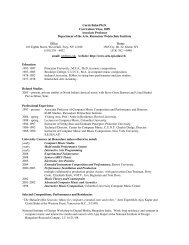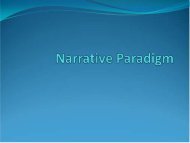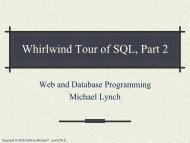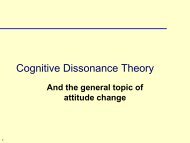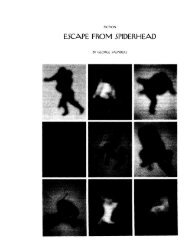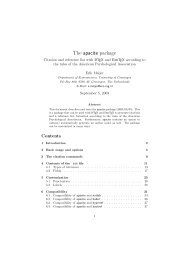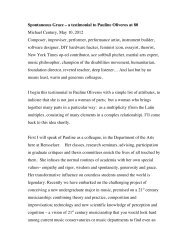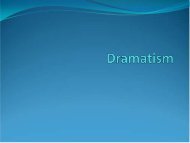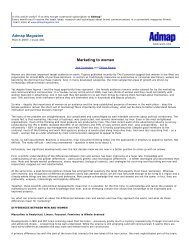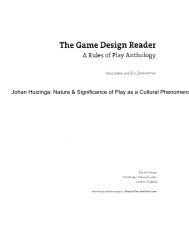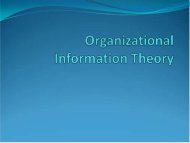The Game Design Document [.pdf]
The Game Design Document [.pdf]
The Game Design Document [.pdf]
Create successful ePaper yourself
Turn your PDF publications into a flip-book with our unique Google optimized e-Paper software.
equesting roads stay away automatically grants it, for example) in order to show the user<br />
what happens but not require them to balance economic and socio-political issues as well as<br />
their own environment. <strong>The</strong> town will also serve as the menu in between games, with<br />
different buildings serving as menu options (Town hall changes player, or a road out of town<br />
quits the game, for example)<br />
User Interaction<br />
Most environmental factors will be activated by the user upon clicking the appropriate<br />
interface icon, which then changes their mouse cursor into the appropriate manipulator.<br />
Each factor will have a "basic" manipulator which costs very little money but does not have<br />
a huge effect on the crop, which is useful for the start of the level. <strong>The</strong>se manipulators will<br />
be held on the cursor and activated repeatedly or continuously, with each activation<br />
consuming money and affecting the crop without removing the tool. Examples of these tools<br />
will be a water nozzle, pest swatter, or the popular "Dog Bark" tool to scare away birds.<br />
Other tools, purchased later in the game, will be placed on the crop and work continuously<br />
for a short time, consuming money as they are placed and continuing to affect the crop until<br />
they disappear.<br />
To get to the town, there will be a picture of the town on the interface near the<br />
sunflower. Clicking that pauses the simulation and brings the user to the town. Different<br />
buildings will activate different features, for example, the town hall will allow the player to<br />
help pass or decline certain laws, and the bank will allow the player to apply for grants/<br />
loans. All these interfaces will be very simple and explained by the narrator when they first<br />
become available, and can be re-explained with a help button.<br />
Level <strong>Design</strong><br />
Levels will be designed based on the crop they are growing. Potatoes will be grown in a<br />
wide open field, corn and wheat will be grown in large circular fields, apples will be grown in<br />
rows of trees. <strong>The</strong> game will be roughly tile based, though the user themselves cannot<br />
select exactly how the tiles can grow. <strong>The</strong> tile growth and progression is determined by the<br />
environmental factors. If conditions are right for planting, a tilled tile may turn into a plant<br />
tile. If there are too many pests, tiles may start to exhibit insects. Tile growth parameters<br />
will be defined in the level file, with separate parameters describing each difficulty level.<br />
<strong>The</strong> Town<br />
<strong>The</strong> town will be the hub of all activity not related directly to the fields. It will consist of a<br />
few options to the player beyond the standard save, load, and exit. One simple option is to<br />
return to the fields. Another will be the town hall, where the player may lobby for or against<br />
policies that will affect their farm. Some policies will be outright beneficial or detrimental to<br />
the player and they must take the correct action to give them better or easier success.<br />
Other policies will be controversial and will both help and harm the player in different ways.<br />
It will be up to the player to determine which side they want to go with depending on their<br />
current situation. A short list of possible policies is below:<br />
Build a large commercial airport, increasing pollution significantly and allowing


![The Game Design Document [.pdf]](https://img.yumpu.com/30117124/4/500x640/the-game-design-document-pdf.jpg)
